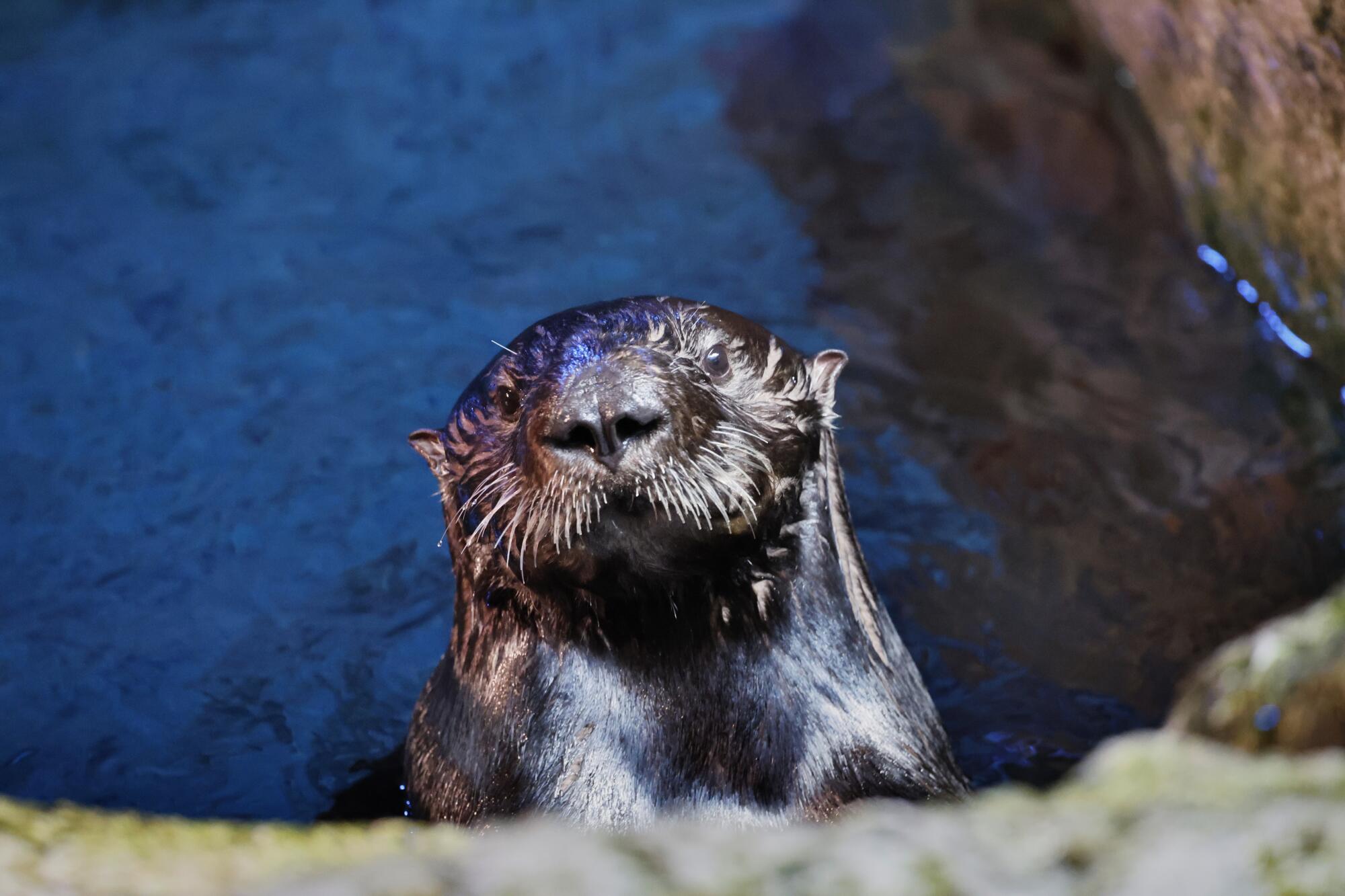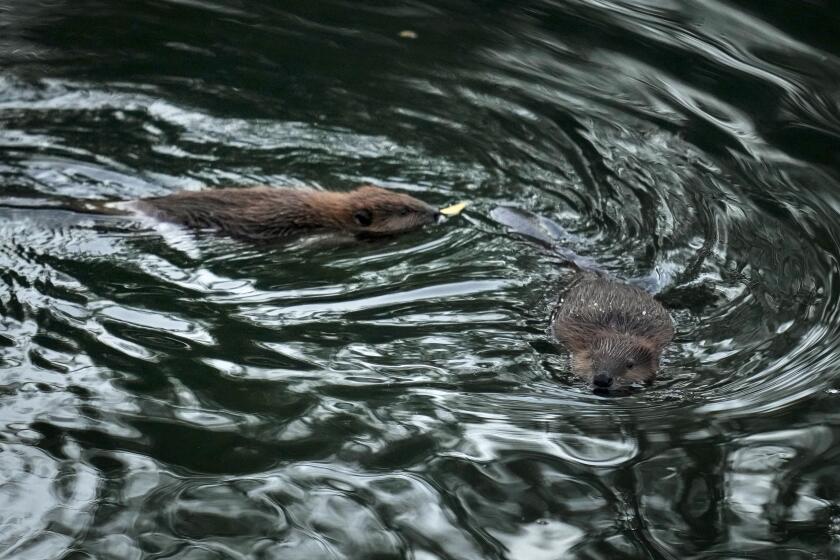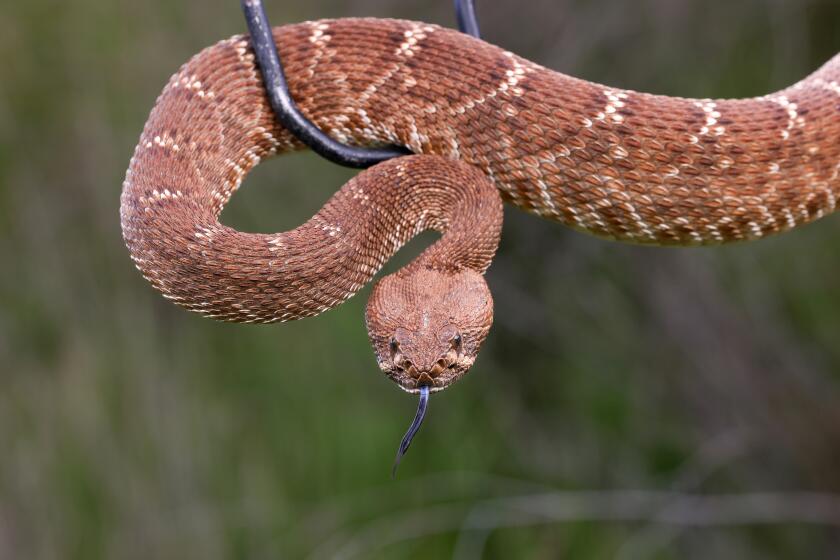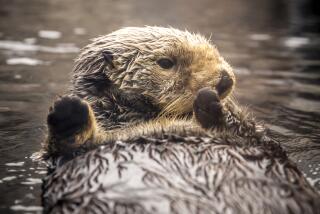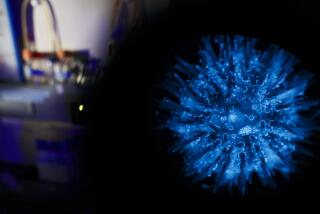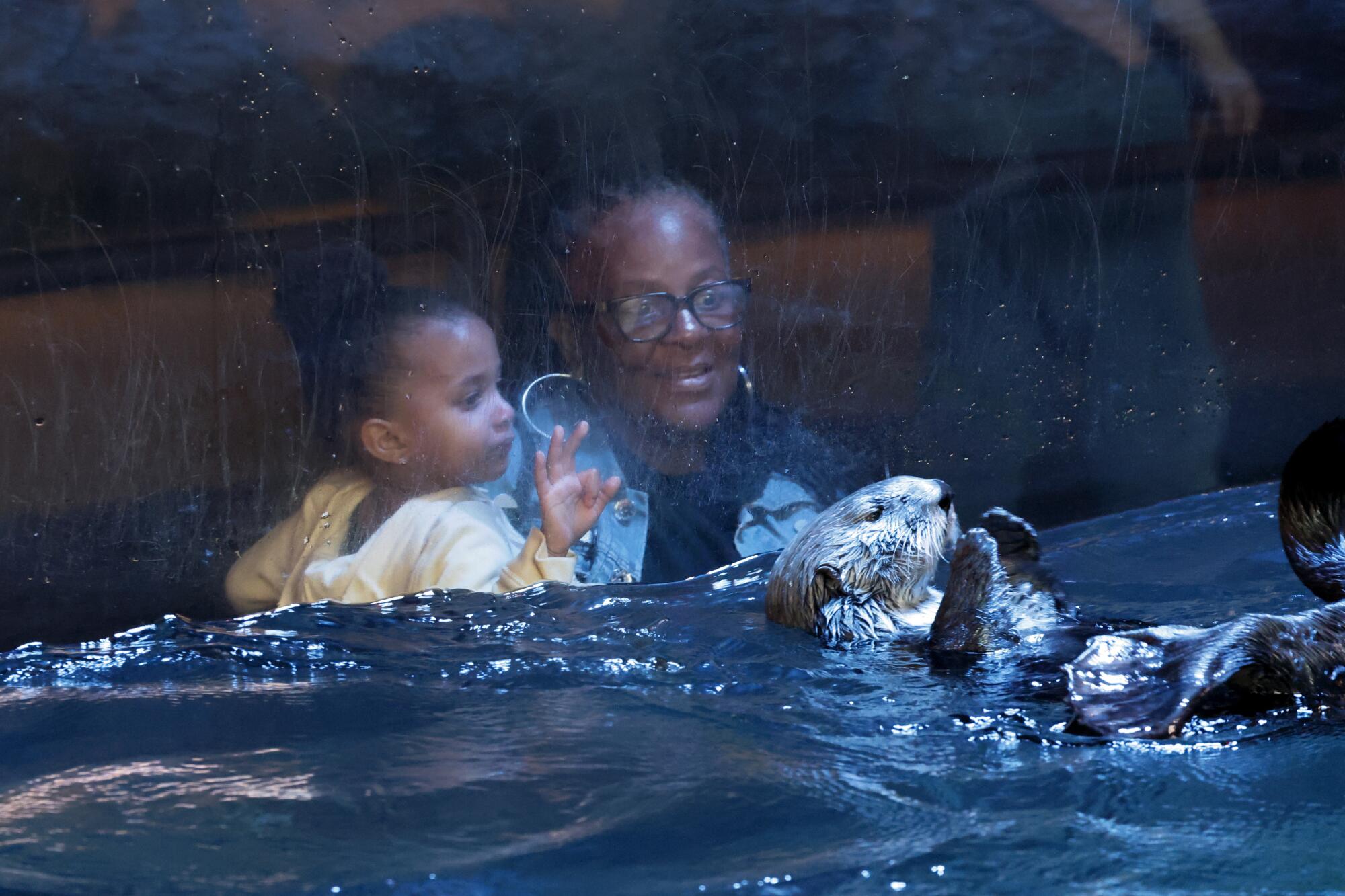
- Share via
Millie, a fatigued mother of an infant, was ready for a nap.
So she grabbed her baby, flipped it around, threw it on her belly and started grooming its tail — a soothing behavior.
Aggressive and impactful reporting on climate change, the environment, health and science.
Millie, a sea otter, is rearing what could be the Aquarium of the Pacific’s first orphaned pup to return to the wild. As a surrogate mom, she’s teaching her adopted baby everything she needs to know to fend for herself — in the hopes she can hack it in the ocean in a few months.
“It’s all instinctual, and she’s doing it way better than any human ever can,” said Megan Smylie, sea otter program manager at the Long Beach aquarium.
Their pairing isn’t all about cuddles and relaxation. Just before Millie decided it was nap time, the pup known as 968 was practicing manipulating a crab shell, one of the skills she’d need to survive in the ocean. She’d also need to master foraging for food and grooming her thick, insulating coat.
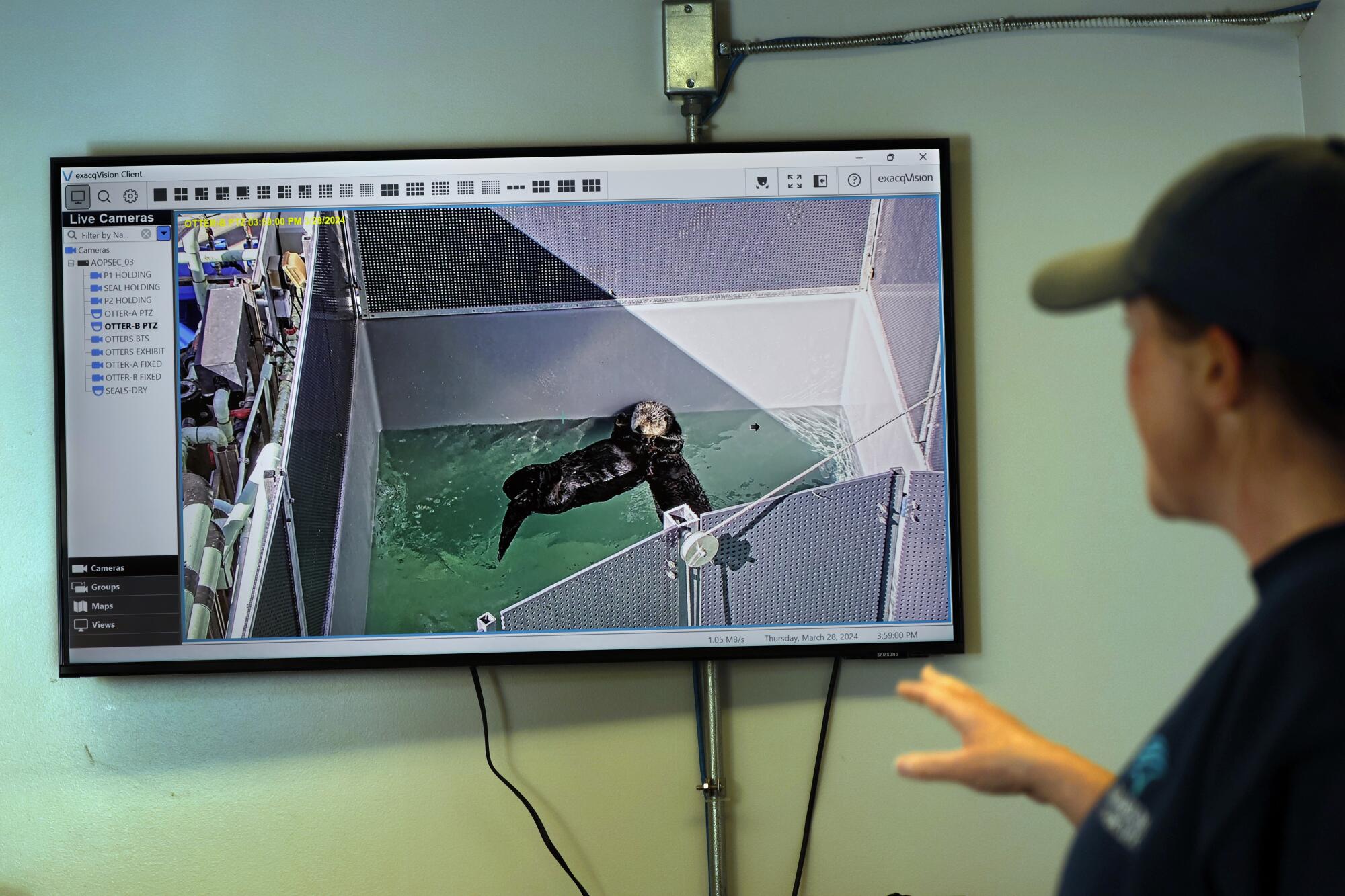
Climate warriors in limbo
Unlike seals and sea lions, otters need to be taught basic survival skills. And, conservationists say, their survival is a high priority.
They’re so important to maintaining a healthy coastal ecosystem that they’re often called “climate warriors.” Otters chow down on urchins, which voraciously devour kelp. When urchins are kept in check, kelp forests flourish — sequestering carbon and providing food and shelter for fish, shellfish and other life.
Once thought to be extinct, southern sea otters’ rebounding population has stalled, stymied by shark bites and parasites. They dive, hunt and float from south of San Francisco to just north of Santa Barbara, a fraction of their historical range, making them vulnerable to localized catastrophes such as oil spills.
There are now about 3,000 southern sea otters. That’s heartening relative to the total in the late 1930s — about 50 — but a far cry from their 150,000-300,000 peak in the early 18th century. Hunting nearly eradicated them, while protections helped them claw back. The population has stabilized over the last five years.
Sometimes baby sea otters get separated from their mothers, who might fall victim to a predator or get swept away during a storm. If they aren’t reunited or rescued by people, the outlook isn’t good; most baby otters can’t survive long alone.
With the recent rollout of its otter surrogacy program, the Aquarium of the Pacific joined the Monterey Bay Aquarium’s efforts and has roughly doubled the capacity in California to rehabilitate orphan otters using adoptive moms — a method research has shown gives the otters the best chance (about 75%) of being wild again.
It’s a promising expansion, but still falls short of the need. Most years, more otters strand than the Long Beach and Monterey facilities can accommodate, according to staffers.
“So growing this program is going to be a pretty high priority for people that are invested in otter conservation,” Smylie said.
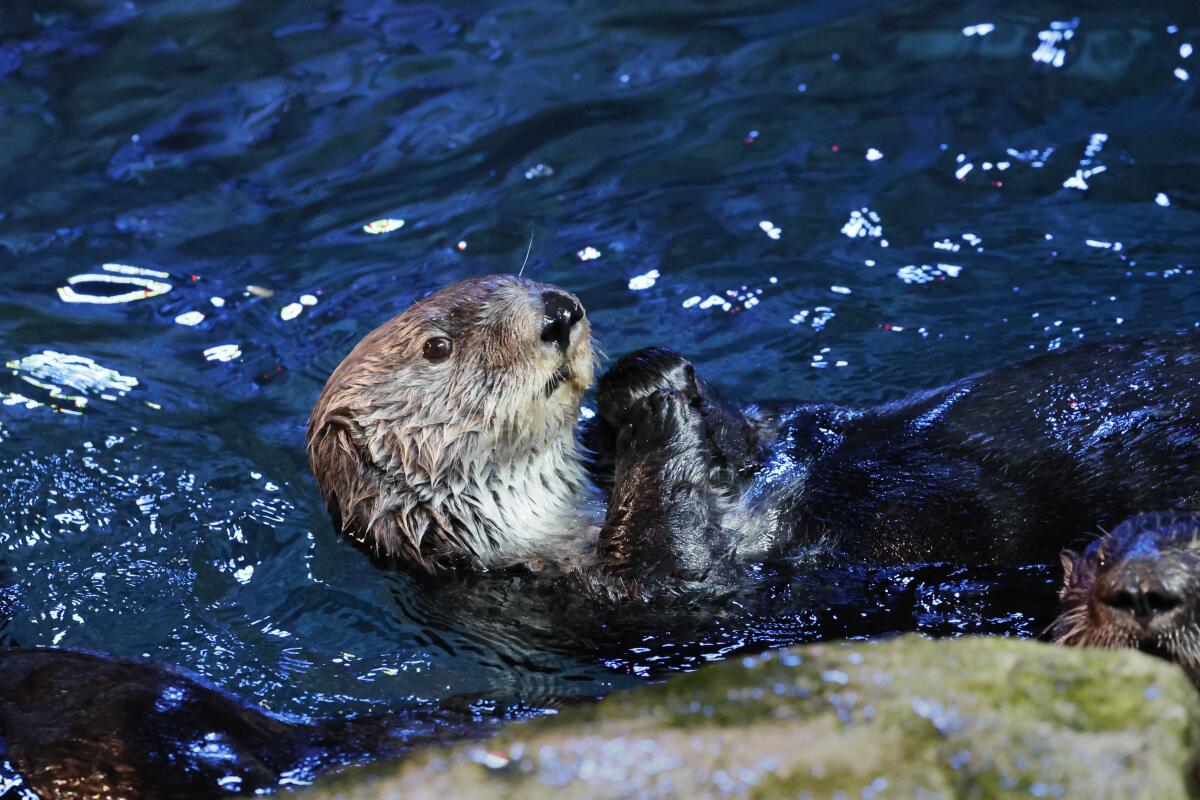
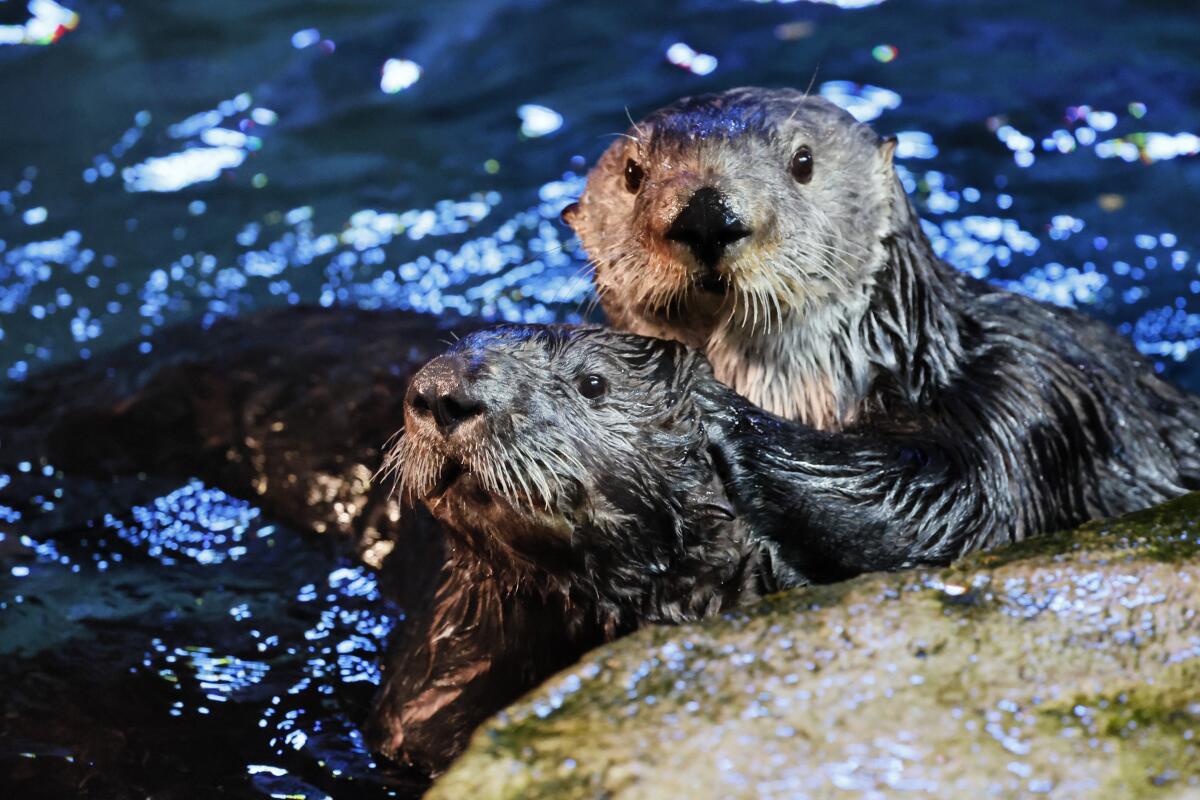
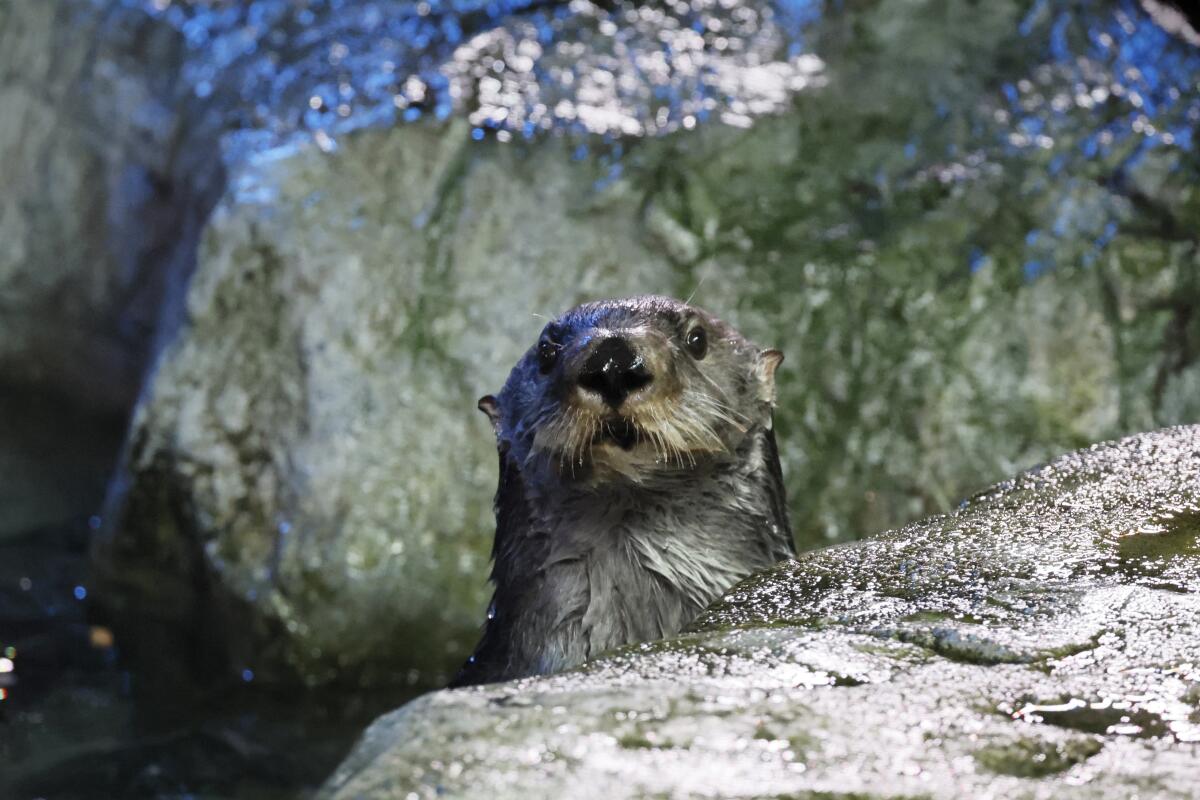
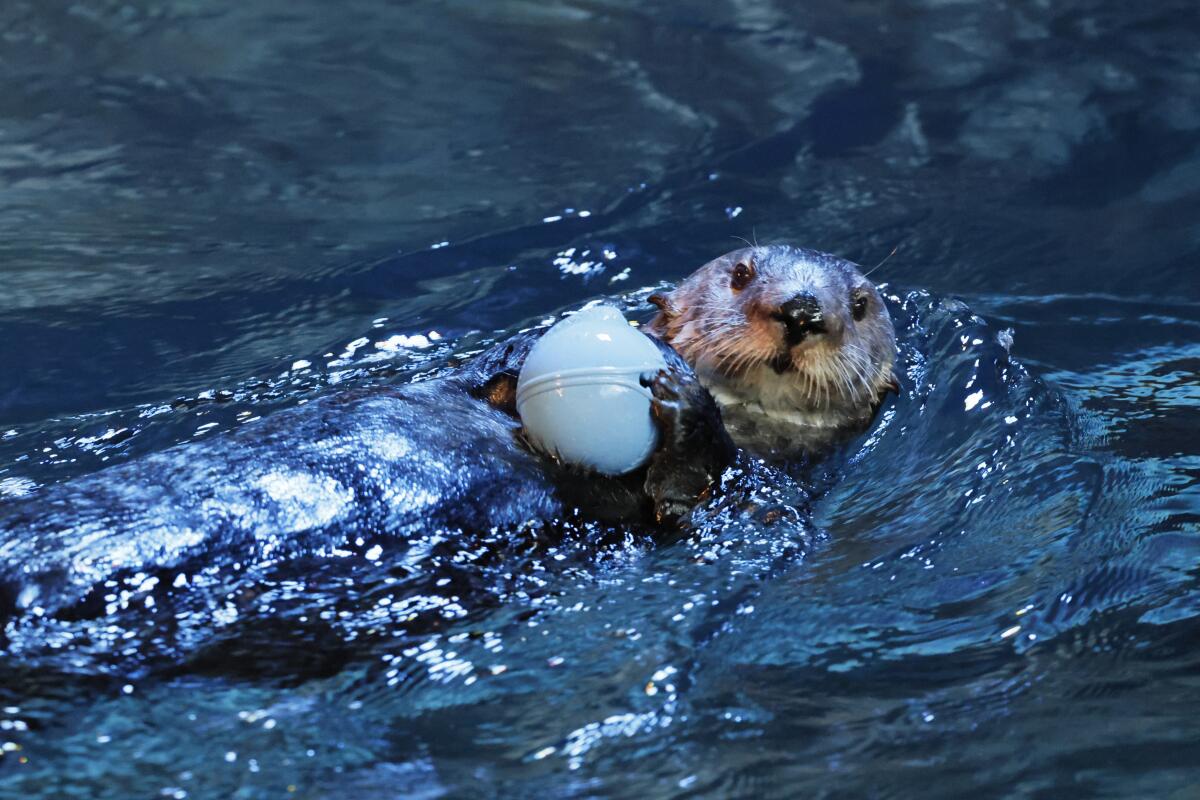
The otters the public can see at the Aquarium of the Pacific provide plenty of cuteness. (Allen J. Schaben / Los Angeles Times)
Hello 968
Toward the end of January, a passerby found 968 stranded north of Santa Cruz. Sometimes an otter mom can be heard calling out for her baby somewhere nearby. But the pup was all alone.
She was about 8 weeks old, and still dependent on her mother for survival. (Otter dads are not in the picture.)
So she was taken to the Monterey Bay Aquarium, where all sea otter pups stranded in California pass through. Her number denotes that she’s the 968th otter to enter the aquarium’s rehabilitation program.
Pups aren’t just tossed back into the surf; they must go through rehabilitation to learn how to be an otter.
So began her long, and still uncertain, path back to the chilly coastal waters of Central California.
Approving two proposed killer whale species could transform how they’re conserved. It would also turn a new page in one of the strangest chapters in marine mammal history.
Teaching an otter how to be an otter
The Aquarium of the Pacific’s foray into otter surrogacy is an outgrowth of the pioneering efforts of the Monterey Bay Aquarium, which started rescuing otter pups in the mid-1980s, even before it officially opened its doors.
The surrogacy concept emerged early on, said Jessica Fujii, manager of the Monterey Bay Aquarium’s sea otter program. In the wild, through their research program, staff “saw adoptions occurring naturally; it wasn’t common, but it had been seen,” she said. “So there was this thought that the strong maternal instincts that sea otters have could translate to the surrogacy in care.”
But an early attempt, in 1987, wasn’t successful. So for a time staffers tried to act as the pup’s mom, even swimming and diving alongside it in a big tidepool near the aquarium to teach it to forage.

While otters raised this way were able to hunt, they didn’t always socialize properly, said Brett Long, senior director of birds and mammals at Aquarium of the Pacific. Many were too comfortable with people.
“We are very good at keeping them alive and very good at keeping them healthy,” Long said. “What we’re not very good at is teaching them how to be an otter back out there.”
Then, in 2001, the Monterey Bay Aquarium paired an orphaned pup with Toola, a stranded female otter who’d had a stillborn. The pair bonded.
From there, the aquarium tried pairing orphans with otters that hadn’t been “primed” by a recent birth. More success.
Beavers create unburned islands where plants and animals can shelter from megafires, research has confirmed. A movement is afoot to reintroduce the rodents to the state’s waterways.
They continued refining the methods, distancing humans from the caretaking process as much as possible. Caretakers wear disguises reminiscent of Darth Vader’s getup during feedings — so they’re not recognized as people. Panels are put around their pools to block the sight of humans, and the otters are monitored remotely. Releasable otters are also never placed in aquarium displays where throngs of visitors can “ooh” and “ahh” at them.
Researchers previously thought “experience and knowledge of the ocean was the most important part” of the rearing process, Fujii explained. “And what we since learned is that really that social aspect and that kind of identification as, ‘You’re an otter,’ was really key.”
Over two decades, 70 pups have passed through the Monterey aquarium’s surrogacy program. Ten mature female otters did their part as adoptive moms. A study found the rewilded otters contributed to population growth in an estuary called Elkhorn Slough. In 2002, when the aquarium began its releases, there were only about 20 otters in the estuary. By 2016, there were more than 100.
In late February 2020, the Long Beach aquarium announced it was joining the surrogacy program as a partner and welcoming Millie, who is now 7. The pandemic around the corner delayed the program’s rollout, and it wasn’t until September 2023 that the permit was approved. But they still had to wait for a stranded otter to put Millie’s surrogacy skills to the test.
It pays to rattle more, bite more often and inject more toxin on an island where rattlesnakes could be trampled or stomped to death by imported goats, pigs, bison and deer, according to a study published in the scientific journal Toxins.
A long road home
After a three-week stabilization period, 968 was driven from Monterey to Long Beach. During the roughly six-hour drive, she had ice to munch on and cool air piped in.
When 968 met Millie in February, it wasn’t familial love at first sight — at least on the pup’s end.
She stranded later than most pups, meaning she may have had some memory of her biological mom, experts said.
“And so the first time it met Millie, it was like, ‘You’re not my mom.’ And Millie, fortunately, was just patient and was, like, ‘Hey, I’m in the pool. I’m hanging out,’” Long said.
A very chill stepmom tactic.
But by the sixth day, things were less chill. If a bond doesn’t form in seven days, then it likely never will, Long said.
Aquarium personnel would get excited every time the pup swam closer to Millie. When the two otters finally united, after nearly seven days, cheers erupted from the office where they watched the events unfold on a livestream.
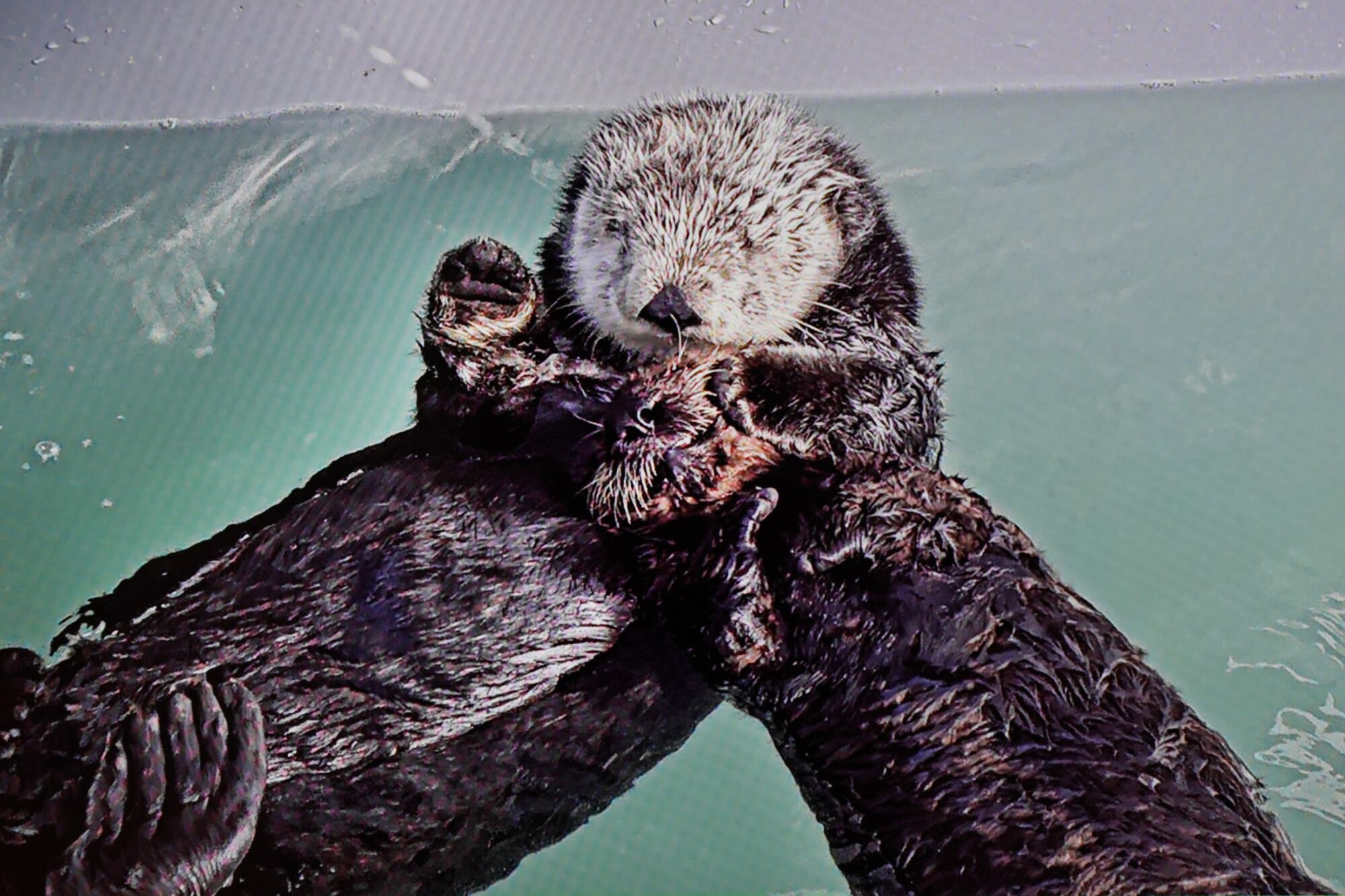
“I don’t know that that’s going to fade,” Long said of the collective enthusiasm. “There’s some invested people on this project, [and] this has become a very popular corner of our administration.”
Now Millie and the pup are inseparable. In late March, 968 rested on Millie’s belly the best she could — the pup had grown to around 18 pounds, from about 11 when she arrived in Long Beach.
After a relaxing nap in the sun, they made their way to the other side of the pool. The pup, now about 4½ months old, played with a piece of a crab shell as Millie relaxed on a platform. Soon the hyper baby scampered up next to mom in what appeared to be the otter version of “Ma, look at me!” According to Long, the pup was in a stage akin to the terrible twos.
Millie, in a sense, is giving back to the program. She was raised through surrogacy herself and for a while did just fine in the wild — until people started feeding her, which is illegal, experts said.
When she was about 2½ years old, she started jumping on kayaks, and federal wildlife officials ordered her out of the water. When Millie was fished out, it turned out she was pregnant. (Millie’s story is reminiscent of the surfboard-stealing otter that became a national sensation over the summer. That otter, dubbed 841, gave birth in the wild shortly after her antics grabbed headlines.)
Millie raised her pup using the surrogacy program protocols, and it was eventually released. It appears her maternal instinct hasn’t faded.
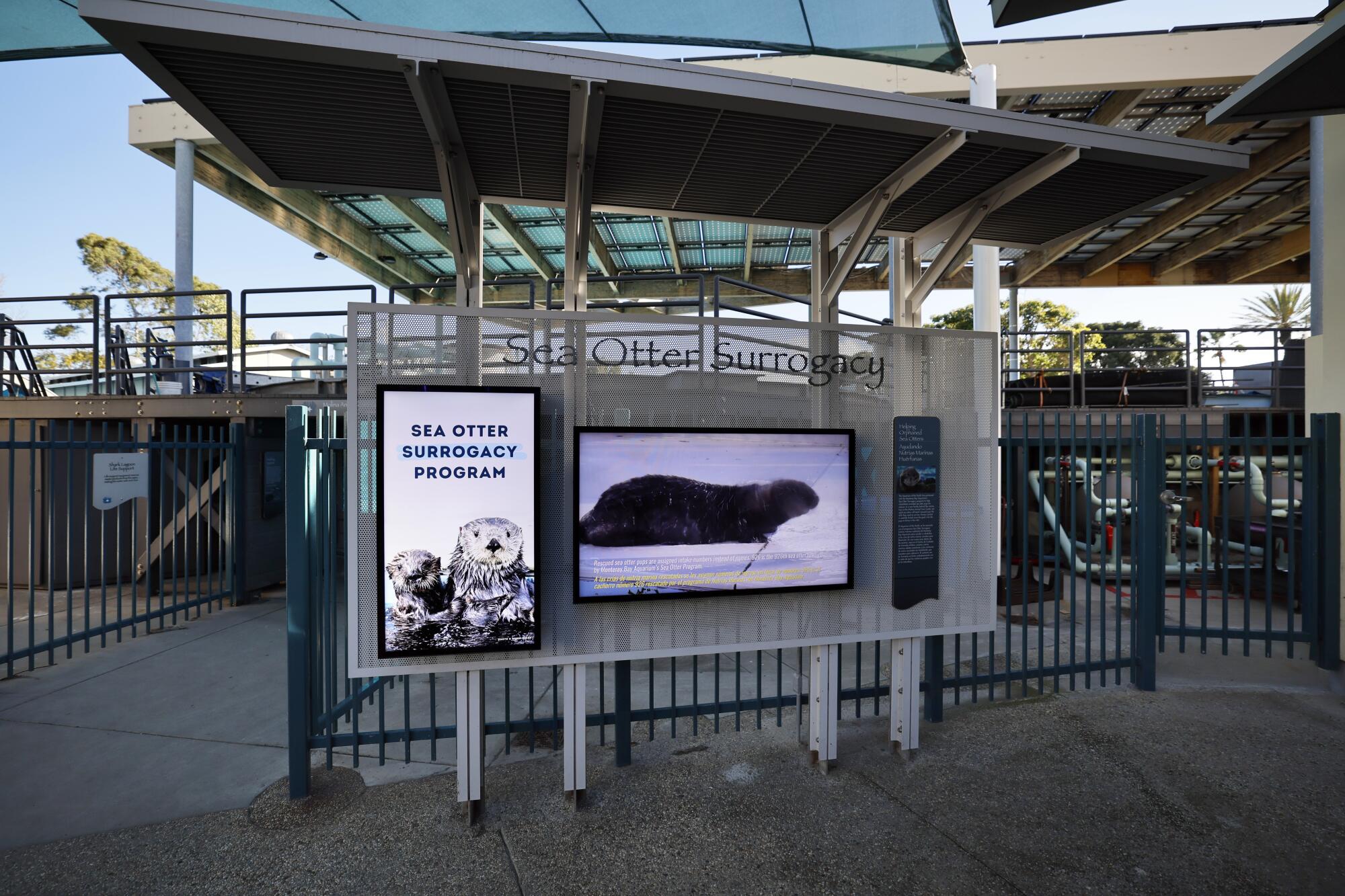
The test
The release of 968 will depend on whether she can reach certain developmental milestones. She has to show she can care for her luxurious fur; crack open clams, mussels and other food; socialize reasonably well with other otters and avoid humans.
She’ll separate from Millie when she’s about 6 months old — the age pups typically leave “home” — and head back to the Monterey aquarium where she’ll hang out with otters closer to her own age. There, she’ll also get the opportunity to hunt live prey.
If all goes well and she passes a final health exam, she’ll return to her native waters. She’ll be implanted with a tracker and rigorously monitored for two weeks. After that period, her survival chances are as good as any otter.
Unfortunately, you can’t wave to 968.
Because the surrogacy program hinges on keeping humans away, visitors at the Long Beach and Monterey aquariums won’t be able to see the otters. The rearing pools at the Aquarium of the Pacific are tucked behind a medical center and a marine mammal protection law prohibits livestreaming their activities to the public.
However, the Long Beach aquarium has launched an exhibit explaining the program. And, yes, it does include adorable video of baby otters.
